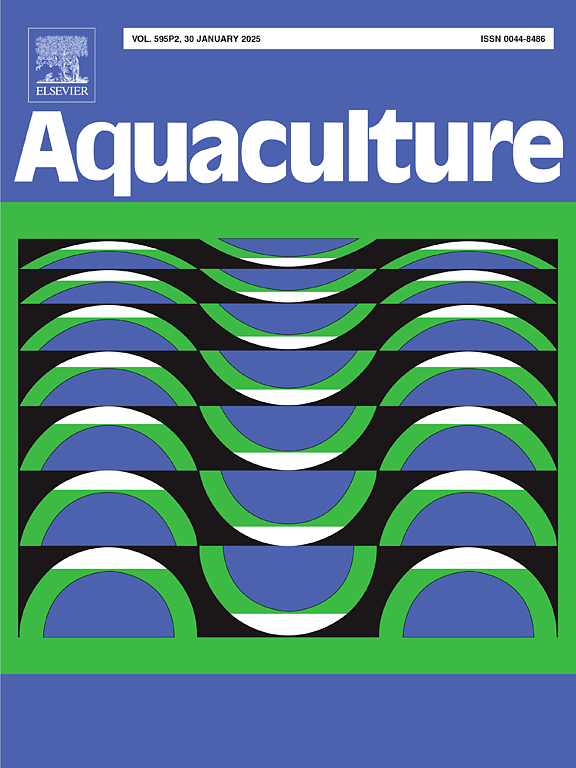Identification of candidate genes and SNPs associated with growth traits by genome-wide association study (GWAS) in sea cucumber (Apostichopus japonicus)
IF 3.9
1区 农林科学
Q1 FISHERIES
引用次数: 0
Abstract
Growth traits are considered the most important production traits for aquatic animals. The genetic enhancement of growth traits has the potential to boost productivity, shorten breeding periods and reduce costs. We constructed four full-sib families of the same age to monitor the growth parameters of A. japonicus and observed a growth variation coefficient exceeding 50 %. To investigate the causes of significant growth variation between individuals, we performed genome-wide association analyses on 271 randomly selected A. japonicus. We identified 3 single nucleotide polymorphisms (SNPs) that showed a significant (−log10(P-value) = 7.65) association and 368 suggestively (−log10(P-value) = 5) association SNPs with growth using a linear mixed model (LMM). A total of 447 candidate genes linked to these SNPs were identified, some of which show a direct relationship with neuroimmunity, transcriptional regulation, signal transduction, substance metabolism, cell differentiation and development processes. These genes differ from growth axis hormone genes in fish, suggesting that the growth trait regulation mechanism of A. japonicus may be species-specific. Furthermore, we validated the differential expression of six genes between high-growth (H) group and low-growth (L) group, which may play crucial roles in the growth of A. japonicus. The results provide not only molecular markers for genetic improvement but also new insights into the regulatory mechanisms of the economically traits in A. japonicus.
生长性状被认为是水产动物最重要的生产性状。生长性状的遗传改良具有提高生产力、缩短育种周期和降低成本的潜力。我们构建了四个同龄全同胞家系来监测日本豚的生长参数,观察到其生长变异系数超过 50%。为了研究个体间显著生长变异的原因,我们对随机挑选的 271 个日本虹鳟进行了全基因组关联分析。通过线性混合模型(LMM),我们发现了 3 个与生长显著相关(-log10(P-value) = 7.65)的单核苷酸多态性(SNPs)和 368 个提示性相关(-log10(P-value) = 5)的 SNPs。与这些 SNP 相关的候选基因共有 447 个,其中一些基因与神经免疫、转录调控、信号转导、物质代谢、细胞分化和发育过程有直接关系。这些基因与鱼类的生长轴激素基因不同,表明日本蛙的生长性状调控机制可能具有物种特异性。此外,我们还验证了 6 个基因在高生长组(H)和低生长组(L)之间的差异表达,这些基因可能在日本鳉的生长过程中起着关键作用。这些结果不仅为遗传改良提供了分子标记,而且为了解日本鸦胆子经济性状的调控机制提供了新的视角。
本文章由计算机程序翻译,如有差异,请以英文原文为准。
求助全文
约1分钟内获得全文
求助全文
来源期刊

Aquaculture
农林科学-海洋与淡水生物学
CiteScore
8.60
自引率
17.80%
发文量
1246
审稿时长
56 days
期刊介绍:
Aquaculture is an international journal for the exploration, improvement and management of all freshwater and marine food resources. It publishes novel and innovative research of world-wide interest on farming of aquatic organisms, which includes finfish, mollusks, crustaceans and aquatic plants for human consumption. Research on ornamentals is not a focus of the Journal. Aquaculture only publishes papers with a clear relevance to improving aquaculture practices or a potential application.
 求助内容:
求助内容: 应助结果提醒方式:
应助结果提醒方式:


